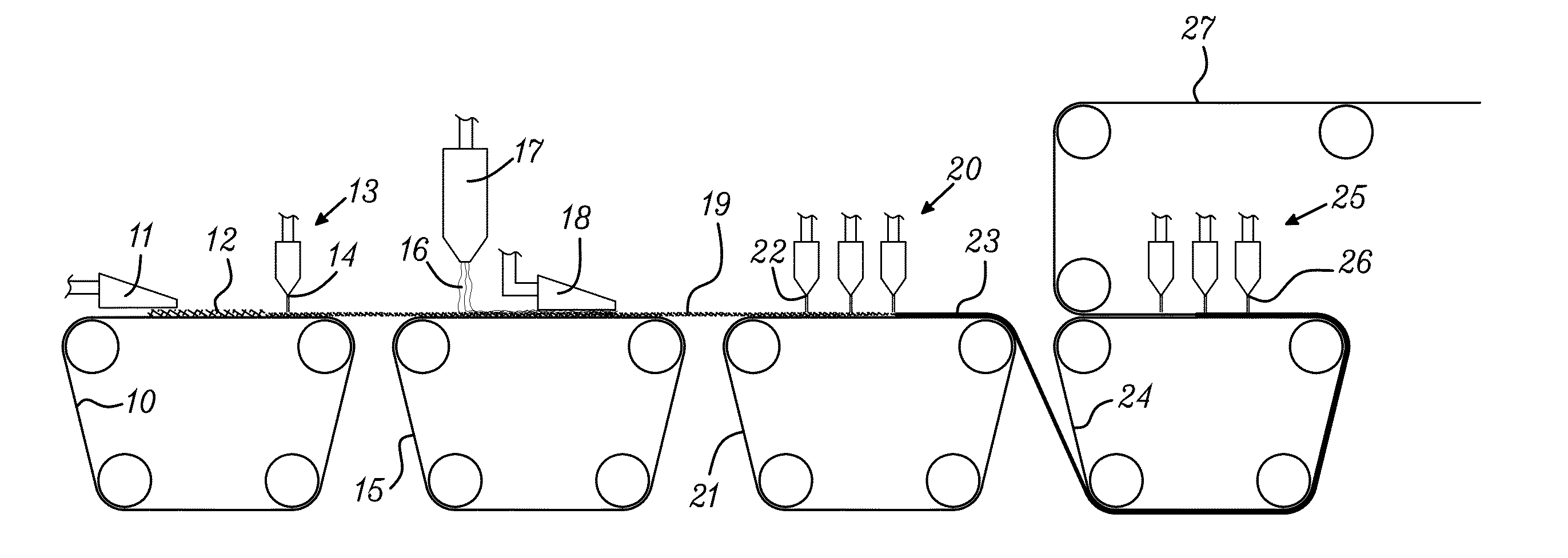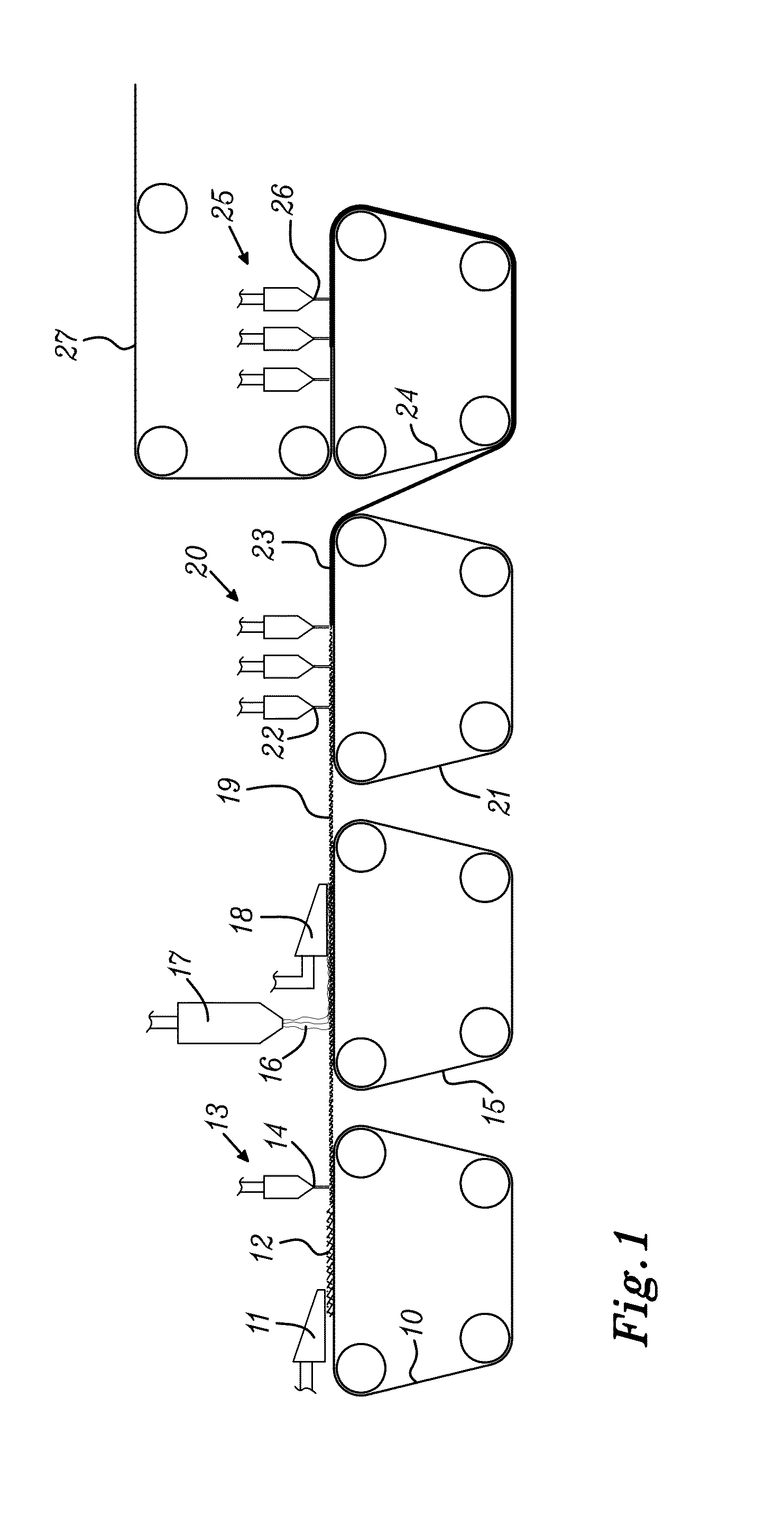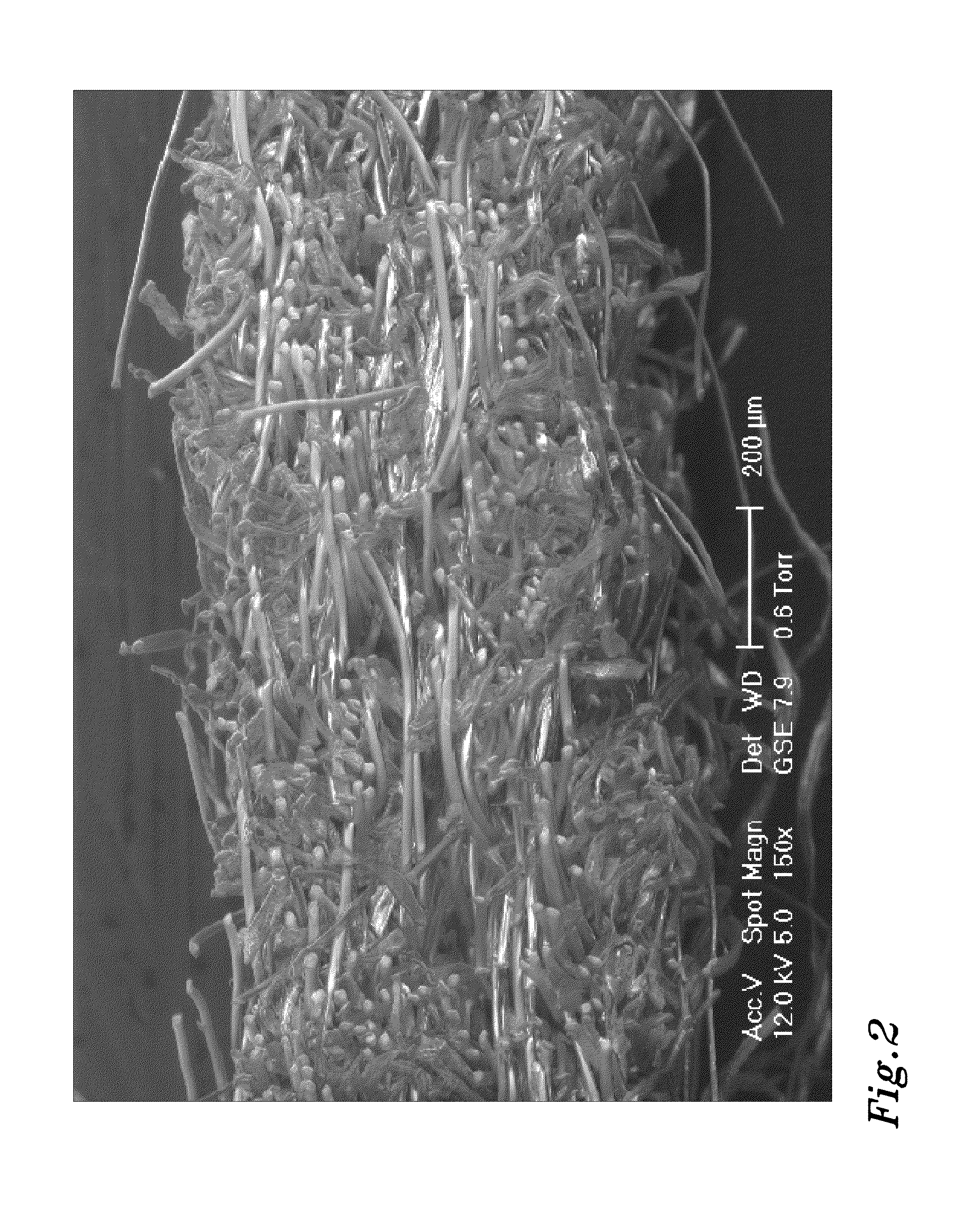Method of producing a hydroentangled nonwoven material
a non-woven material and hydroentangled technology, applied in the direction of non-woven fabrics, synthetic cellulose/non-cellulose material pulp/paper, pattern making, etc., can solve the problems of marked two-sided, disadvantage, and inability to integrate the fibres of the different fibrous webs
- Summary
- Abstract
- Description
- Claims
- Application Information
AI Technical Summary
Benefits of technology
Problems solved by technology
Method used
Image
Examples
Embodiment Construction
[0030]One example of a method according to the invention for producing a hydroentangled nonwoven material is shown in FIG. 1. A slurry comprising a mixture of natural fibers and manmade staple fibers is wetlaid on a forming fabric 10 by a headbox 11. The slurry may besides water contain conventional papermaking additives such as wet and / or dry strength agents, retention aids and dispersing agents. A special variant of wetlaying or wetforming is foamforming, wherein the natural fibers and staple fibers are dispersed in a foamed liquid containing water and a surfactant. The liquid or foam is sucked through the forming fabric 10 by means of suction boxes (not shown) arranged under the forming fabric, so that a first fibrous web 12 comprising natural fibers and manmade staple fibers is formed on the forming fabric 10. Foamforming is described in for example WO 96 / 02702 A1. An advantage of foamforming is that it requires less liquid to be pumped and sucked through the forming fabric as c...
PUM
| Property | Measurement | Unit |
|---|---|---|
| pressure | aaaaa | aaaaa |
| pressure | aaaaa | aaaaa |
| pressure | aaaaa | aaaaa |
Abstract
Description
Claims
Application Information
 Login to View More
Login to View More - R&D
- Intellectual Property
- Life Sciences
- Materials
- Tech Scout
- Unparalleled Data Quality
- Higher Quality Content
- 60% Fewer Hallucinations
Browse by: Latest US Patents, China's latest patents, Technical Efficacy Thesaurus, Application Domain, Technology Topic, Popular Technical Reports.
© 2025 PatSnap. All rights reserved.Legal|Privacy policy|Modern Slavery Act Transparency Statement|Sitemap|About US| Contact US: help@patsnap.com



